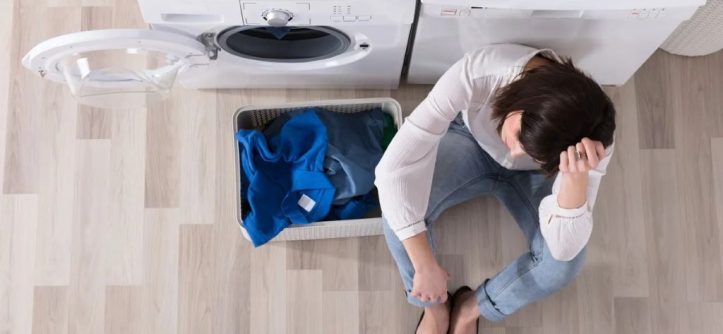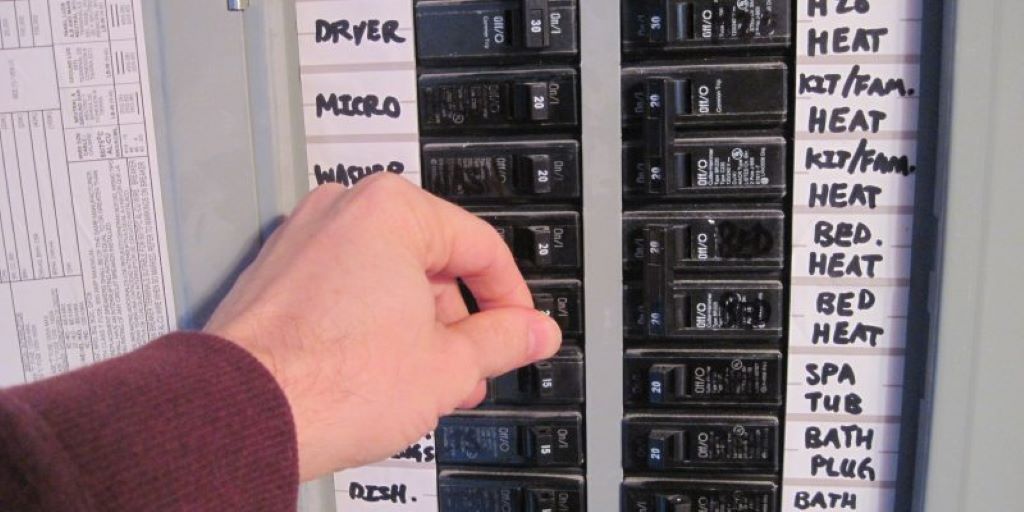A dryer that keeps tripping your circuit breaker isn’t just an annoyance; it can be a sign of a potential electrical issue. While calling an electrician is often the safest and most reliable option, there are some basic troubleshooting steps you can take to narrow down the issue and potentially fix the problem yourself.
Understanding the Problem
Circuit breakers are essentially safety switches designed to trip when an electrical circuit experiences an overload. This overload is a surge of current that exceeds the circuit’s safe carrying capacity. Several things in your dryer can cause this, including a faulty heating element, a malfunctioning motor, or damaged wiring.
Safety First
Before you start any troubleshooting, safety is paramount. Follow these essential safety steps:
- Turn off the power: Locate the circuit breaker panel and switch the breaker controlling the dryer circuit to the “OFF” position.
- Unplug the dryer: Unplug the dryer from the outlet to ensure no power is flowing through it.
- Discharge residual power: Some components within the dryer may still hold charge. Wait a few minutes, then touch a metal tool (like a screwdriver) from a wire terminal on the heating element to its metal casing to discharge any residual energy.
Troubleshooting Steps
Let’s look at the most common culprits and how to investigate them:
- Check the Circuit Load: Dryers are high-power appliances. Make sure you haven’t overloaded the circuit by plugging in other devices while the dryer is running. Dedicate a circuit to your dryer if possible.
- Examine the Power Cord: Inspect the power cord for any signs of damage, such as cuts, frays, or burn marks. A damaged power cord can cause shorts and trip the breaker. If you see any damage, have the power cord replaced by a qualified electrician.
- Inspect the Dryer Vent: A clogged dryer vent restricts airflow. This forces your dryer to work harder, potentially drawing more current and tripping the breaker. Clean your dryer vent thoroughly by disconnecting it and removing lint build-up. If cleaning doesn’t help, consider having the vent inspected for any obstructions.
- The Heating Element: This is one of the most common reasons for a dryer tripping the breaker:
- Locate the Heating Element: Unplug the dryer and remove the back panel. Consult your dryer’s manual to locate the heating element. It’s usually a metal coil assembly inside a metal housing
- Visual Inspection: Look for any breaks in the coils or signs of the coil touching the metal housing. This would indicate a short circuit.
- Testing with a Multimeter: Set your multimeter to continuity. Touch one probe to a heating element terminal and the other probe to the element housing. If there’s continuity, the heating element is faulty and needs to be replaced.
- Malfunctioning Drive Motor: The motor powers the dryer’s drum. Here’s how to check it:
- Access the motor: The location varies depending on your dryer. Consult your manual. You’ll need to remove back or front panels, and possibly the drum itself.
- Check for obstructions: Make sure the motor can rotate freely by hand, and check if anything is stuck in it.
- Multimeter Test: Test motor windings for continuity with your multimeter. Compare the results to the manufacturer’s specifications (found in your manual or online). A winding that lacks continuity likely indicates a bad motor.
- Internal Wiring: Carefully inspect the dryer’s internal wiring. Look for any melted, burned, or loose wires, especially around high-heat components like the heating element and motor. Any compromised wiring should be fixed by a qualified electrician.
- Faulty Circuit Breaker: If all of the above elements check out, there’s a chance the circuit breaker itself is worn out. A licensed electrician should be able to test the breaker and determine if it needs replacement.
Important Considerations
- When in Doubt, Seek Help: If you’re uncomfortable with any step of this process or the problem persists, call a qualified electrician. Electrical work can be dangerous.
- Document & Consult Your Manual: Taking pictures of the components before disconnecting them can be helpful for reassembly. Always refer to your dryer’s manual for specific instructions and safety guidelines.
Let me know if you’d like more detail on any of the troubleshooting steps!






Leave a Reply